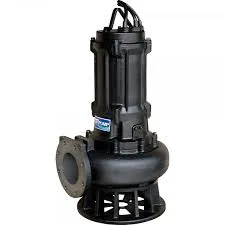English
- Afrikaans
- Albanian
- Amharic
- Arabic
- Armenian
- Azerbaijani
- Basque
- Belarusian
- Bengali
- Bosnian
- Bulgarian
- Catalan
- Cebuano
- Corsican
- Croatian
- Czech
- Danish
- Dutch
- English
- Esperanto
- Estonian
- Finnish
- French
- Frisian
- Galician
- Georgian
- German
- Greek
- Gujarati
- Haitian Creole
- hausa
- hawaiian
- Hebrew
- Hindi
- Miao
- Hungarian
- Icelandic
- igbo
- Indonesian
- irish
- Italian
- Japanese
- Javanese
- Kannada
- kazakh
- Khmer
- Rwandese
- Korean
- Kurdish
- Kyrgyz
- Lao
- Latin
- Latvian
- Lithuanian
- Luxembourgish
- Macedonian
- Malgashi
- Malay
- Malayalam
- Maltese
- Maori
- Marathi
- Mongolian
- Myanmar
- Nepali
- Norwegian
- Norwegian
- Occitan
- Pashto
- Persian
- Polish
- Portuguese
- Punjabi
- Romanian
- Russian
- Samoan
- Scottish Gaelic
- Serbian
- Sesotho
- Shona
- Sindhi
- Sinhala
- Slovak
- Slovenian
- Somali
- Spanish
- Sundanese
- Swahili
- Swedish
- Tagalog
- Tajik
- Tamil
- Tatar
- Telugu
- Thai
- Turkish
- Turkmen
- Ukrainian
- Urdu
- Uighur
- Uzbek
- Vietnamese
- Welsh
- Bantu
- Yiddish
- Yoruba
- Zulu
Telephone: +86 13120555503
Email: frank@cypump.com
Aug . 31, 2024 11:46 Back to list
sewage pumping
Understanding Sewage Pumping The Lifeline of Waste Management
Sewage pumping plays a critical role in modern waste management, facilitating the safe and efficient transport of wastewater from homes and industries to treatment facilities. As urban populations grow and infrastructure ages, the need for effective sewage pumping systems becomes increasingly important to maintain public health and environmental safety.
At its core, sewage pumping involves transferring wastewater through a series of pipes and pumps. This process is essential because gravity alone cannot always effectively move sewage from low-lying areas to treatment plants. Pump stations are strategically placed in various locations, often at the lowest points of a community, to collect and elevate sewage when necessary.
Sewage pumps are designed to handle a range of materials found in wastewater, including solids, liquids, and, at times, hazardous materials. They come in different types, including submersible pumps, which are installed beneath the water surface, and centrifugal pumps, which use a rotating mechanism to move fluids. The choice of pump depends on factors like the volume of sewage, distance to be pumped, and the nature of the waste.
The operation of sewage pumping systems is not merely a mechanical task; it is essential for the protection of public health
. Without efficient pumping, sewage overflow can lead to contamination of surface waters, posing serious health risks such as waterborne diseases. Effective sewage pumping reduces the likelihood of overflows and backups in residential and commercial properties, which can cause significant damage and costly remediation.sewage pumping

Maintaining a sewage pumping system involves regular inspections, maintenance, and, when needed, upgrades. Operators monitor pump performance, check for blockages, and ensure that all components are functioning correctly. Advanced technologies, such as remote monitoring systems, have emerged, allowing operators to receive real-time data and alerts, thereby enabling quicker response times to any issues.
Innovation in sewage pumping technology is also guided by sustainability principles. With growing concerns about environmental impacts, many communities are investing in energy-efficient pumps and green technologies that reduce the carbon footprint of waste management processes. Additionally, there is a focus on resource recovery from wastewater, such as producing biogas from sewage sludge, which can be used as an energy source.
Public awareness of sewage pumping systems is crucial. Community education programs can illuminate the importance of proper waste disposal methods, including avoiding flushing inappropriate items down toilets, which can lead to clogs and pump failures. By fostering a culture of responsibility, communities can help extend the lifespan of sewage pumping infrastructure and enhance overall efficiency.
In conclusion, sewage pumping is vital for ensuring the hygiene and health of urban environments. As cities expand and develop, continuous investment in sewage pumping infrastructure and education will be key to creating sustainable communities where public health is prioritized, and environmental impacts are minimized. A well-functioning sewage pumping system not only protects our environment but also contributes significantly to the quality of life for all residents.
-
ISG Series Vertical Pipeline Pump - Chi Yuan Pumps Co., LTD.|High Efficiency, Energy Saving, Low Noise
NewsJul.30,2025
-
ISG Series Vertical Pipeline Pump- Chi Yuan Pumps|High Efficiency&Low Noise
NewsJul.30,2025
-
ISG Series Vertical Pipeline Pump-Chi Yuan Pumps Co., LTD.|High Efficiency&Energy Conservation
NewsJul.30,2025
-
ISG Series Vertical Pipeline Pump - Chi Yuan Pumps Co., LTD.|Advanced Hydraulic Design&Energy-Efficient Solutions
NewsJul.30,2025
-
ISG Series Vertical Pipeline Pump - Chi Yuan Pumps Co., LTD.
NewsJul.30,2025
-
ISG Series Vertical Pipeline Pump - Chi Yuan Pumps Co., LTD.|energy-efficient fluid handling&industrial durability
NewsJul.30,2025










